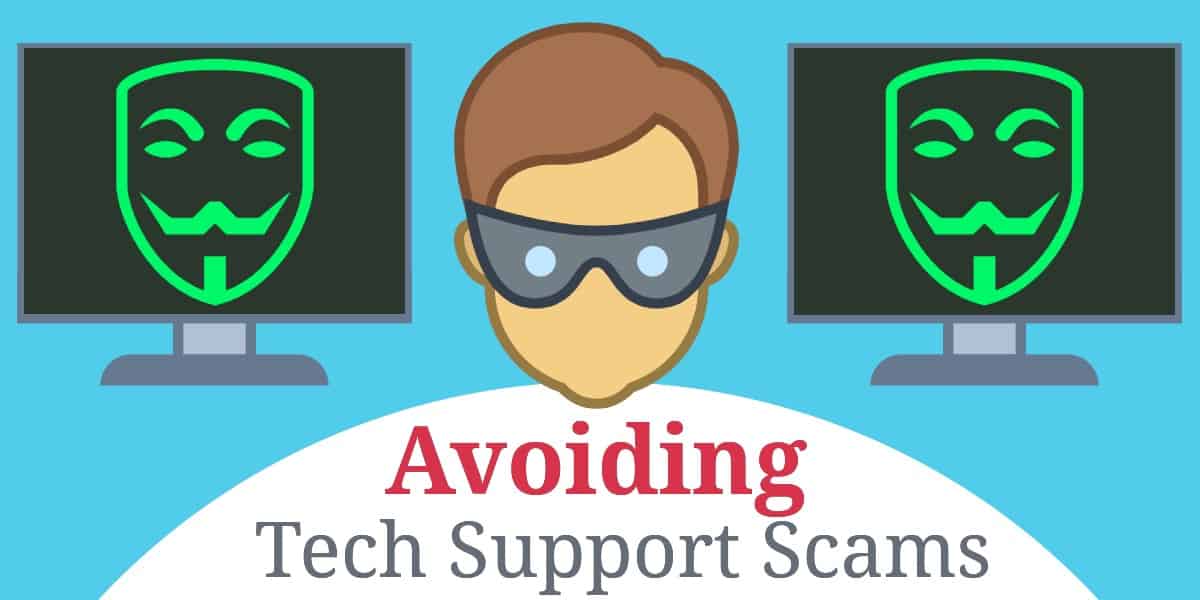Malware and computer viruses frighten us. Tech support scammers are well aware of that and don’t hesitate to take advantage. They will claim your device or computer is having major issues and requires an immediate and expensive remedy. Here’s how not to fall for this.
Typically, tech support scams start with a phone call out of the blue. Sometimes, they might begin with a pop-up warning on your device or computer. The FTC reports that some scammers will call “on behalf” of well-known security companies like McAfee or Norton or tech giants like Microsoft or Apple and claim there is an immediate threat. They will say they need to run diagnostics and ask the victim for remote access to their computer. Once they’ve “run” these tests, they will pretend to have found a virus or malware that they say will destroy all your data.
The Game is On
Now that they’ve got your attention, they will tell you that you need certain services, software, repairs, or something else that is – you guessed it – quite costly. They might request your credit card number, but they’re more likely to ask for a money transfer or gift card payment because these are hard to trace. If you refuse, they use their access to actually infect your computer with a virus or malware, which will collect financial and personal details from it. They might do this even if you agree to pay because their goal was identity theft all along.
You’re thinking, “How dumb do you have to be to fall for this?” It turns out intellect has precious little to do with anything. The common denominator is fear, with 3.3 million people falling prey to tech support scammers every year, according to data from Microsoft. The annual cost of these scams is a whopping one and a half-billion dollars. What’s more, these figures don’t account for losses to victims who never reported the scam.
Protect Yourself
Apple and Microsoft never call customers of their own volition. They only get in touch if the client has initiated communication.
If you get a pop-up message on your PC, tablet, or phone that contains misspelled words or bad grammar, that’s a sure sign it’s fake. It also shouldn’t prompt you to call a “toll-free number.”
No legitimate organization will ask for payment via wire transfer, cash reload card, or gift card.
If someone calls you unsolicited claiming to be a tech service provider for your software or device, hang up and report them to the Federal Trade Commission. The FTC builds cases against scammers on this basis. Over 100,000 people filed scam reports with the watchdog in 2019 alone.
Shut your browser down to get rid of bogus virus alerts. Do this via Task Manager on Windows and Force Quit from the menu or Option, Command, and Escape on Mac.
If you fear you may have a genuine problem, get in touch with a legitimate technician.
Once you get a fake pop-up, run a scan at once. Equip your computer with antivirus software and update it on a regular basis. You could also take advantage of your browser’s pop-up blocker.
What not to Do
Never call any numbers in pop-up messages. When sending a real alert, your antivirus program or OS will not ask you to call anyone. Obviously, don’t give random callers payment information or access to your computer, even if they seem genuinely well-meant. Don’t close pop-up windows – you might be redirected to a scam site.
Never purchase security software from an organization with an unfamiliar name before doing in-depth research on it.
If you receive a call sometime after making a tech support purchase that you were unhappy with and the caller asks if you want a refund, don’t fall for it. Refund scams have become commonplace. The scammer will ask for a credit card or bank details to “deposit the refund.”
If You’re the Victim of a Tech Support Scam
If you fell for the ploy, get in touch with your financial service company and ask them to request payment reversal. Ask for reversal of any and all unauthorized charges. The FBI’s Internet Crime Complaint Center also accepts scam reports.
